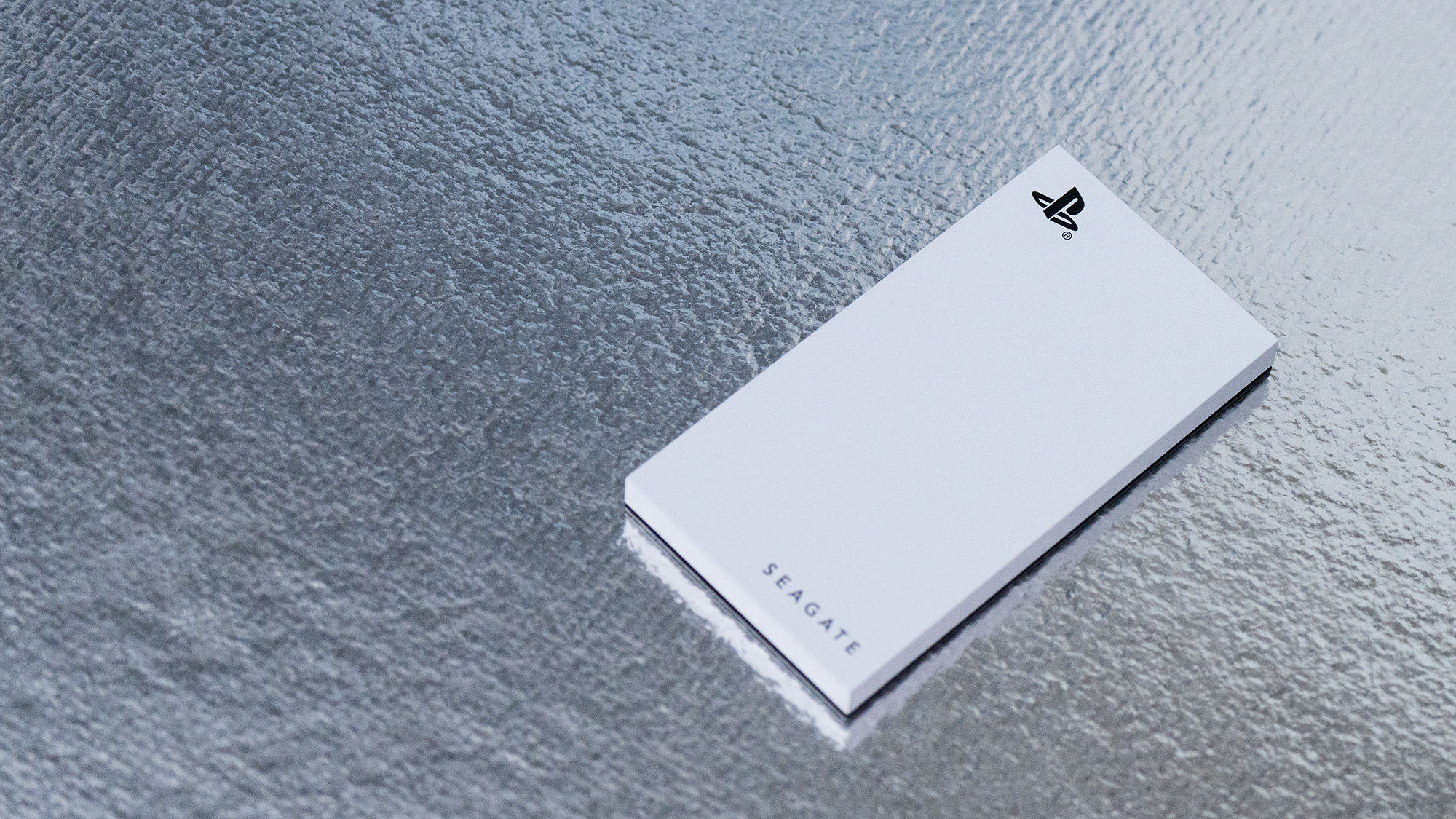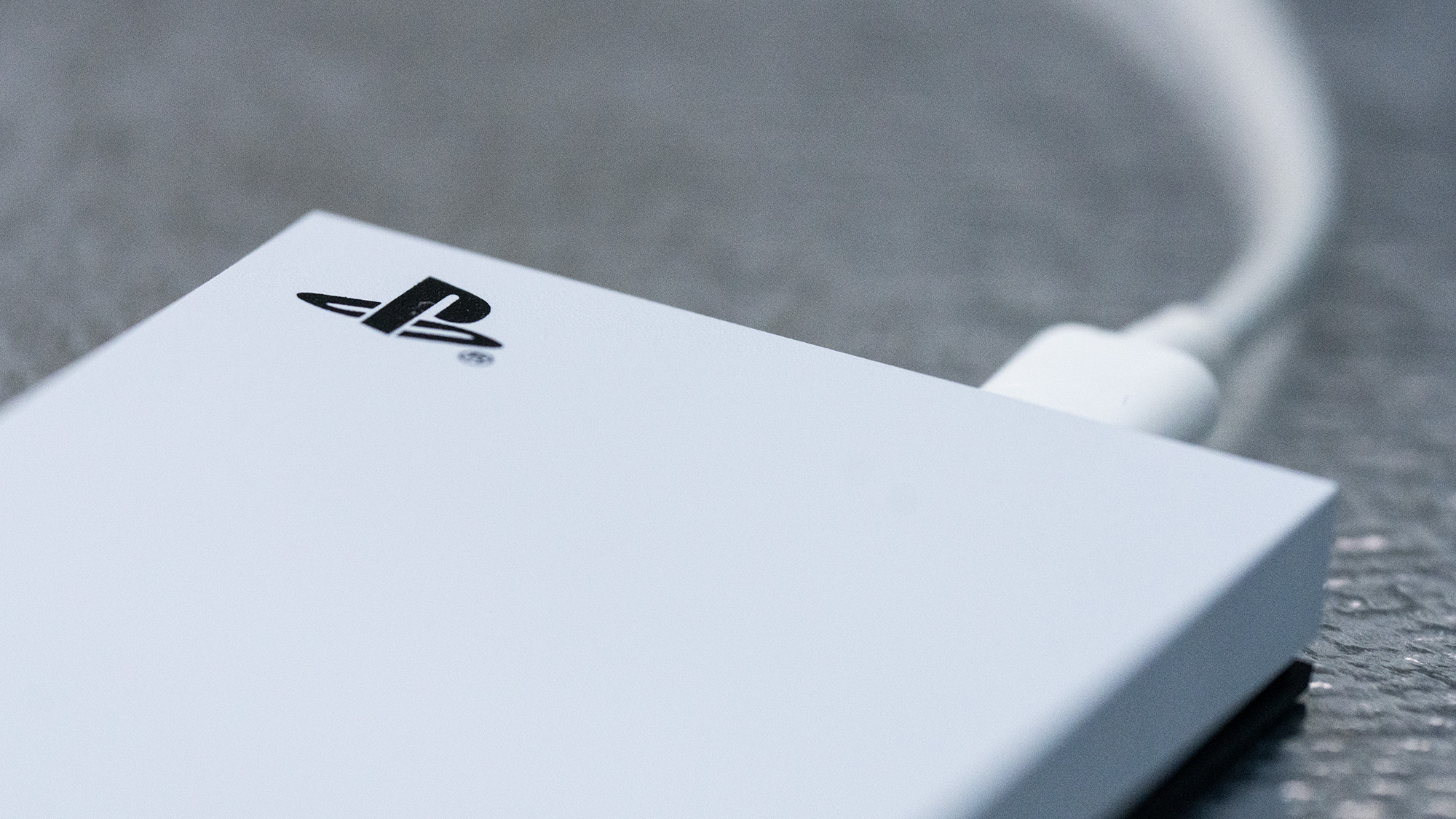Our Verdict
It may be marketed as a gaming accessory, but the Seagate Game Drive turns out to be a useful little SSD no matter what you connect it to. As handy with a MacBook as with the PlayStation it was designed for, it provides decent USB 3.2 transfer rates and looks good too.
For
- Looks sharp
- Good transfer rates
- Choice of cables
Against
- Could be cheaper
- Smaller options available
- Lights up (a matter of taste)
Why you can trust Creative Bloq
External SSDs tend to be anonymous little boxes that don’t draw attention to themselves, adorned only with a USB port, a maker’s logo and a power LED if you’re lucky. This model from Seagate is officially licensed for Sony’s PlayStation games console, which surely makes it a shoo-in for our Best SSDs for PS5 list, and comes with a matching light bar that glows blue while you’re using it. Whether this is a good idea or not is a matter of taste, but there's no denying the rather good data transfer performance that this little drive is capable of.

Capacity: 2TB or 5TB
Interface: USB 3.2 Gen 2
Dimensions: 20 x 76 x 114mm
Weight: 249g
Design & build
The drive is PlayStation-branded, which means you get a 14-day trial of PlayStation Plus in the box and that it comes in the sort of greyish-white colour of the PlayStation 5 console’s default cover (if you’re not familiar with the latest Sony console, it’s not too dissimilar to the colour of Canon’s L-series telephoto lenses) with a PS logo at the top. There's an Xbox version too, if your gaming sympathies lie with Microsoft. Apart from the external branding and colour, from the outside they all look the same, and this is a standard USB 3.2 SSD, powered by its USB cable, so it will mount and work with just about anything.
The casing is plastic, and larger than both the Kingston XS1000R and Crucial X9. The one sent to us is a 2TB model, but one of 5TB capacity is also available, and represents pretty good value as it’s less than twice the price of the smaller model. When plugged in, a blue LED strip illuminates at the front of the drive (orange in Xbox models) and there's also an activity LED at the back, near the USB-C port. Neither of them blinks while data is being transferred, simply allowing you to tell if the drive is receiving power or not and, in the case of the blue strip, looking cool.

Overall, it is an exceptionally nice-looking drive, with no chance of being mistaken for a USB key, and if the PlayStation logo wasn’t visible on the front of the casing there would be no question of it being gaming-related. Its larger shape and sharper edges don’t stop it from being easily pocketable, and if anything they mean it’s less likely to get lost.
Features
Apart from the outside of the casing, there's little to say about the Game Drive itself. It’s an officially licensed product, so has firmware on-board that enables it to work seamlessly with Sony’s PS4 and PS5 consoles, but there's nothing stopping you from hooking it up to a PC or Mac, and it comes formatted as EXFAT for easy transfer between systems.

The packaging is a nice example of cardboard engineering, keeping the drive solidly contained and unable to flop about inside. Two USB cables are included, both Type-C and Type-A, rather than one and an adapter, and there's also a warning document telling you to keep the drive at least four inches away from your console.
Performance
| PCMark 10 | Row 0 - Cell 1 |
| Bandwidth | 214MB/s |
| Average access time | 111µs |
| CrystalDiscMark | Row 3 - Cell 1 |
| Read | 1021.48Mb/s |
| Write | 1057.42Mb/s |
The PS5 offers a USB 3.2 connection, with both Type-A and Type-C ports. This means there's little requirement for a drive designed for use with the console to perform particularly well, especially as the real high-speed drive will be found in its PCIe 4.0 SSDs, of which it can accommodate two. You’re forced to use the M.2 drives if you want to play PS5 games, but can play PS4 games from an external drive, or use it to offload downloaded games to free up space.
Daily design news, reviews, how-tos and more, as picked by the editors.
Just out of curiosity, though, we hooked the Seagate Game Drive up to a Windows 11 PC with USB 4 ports, using a cable rated for 40Gbps data transfers, to see if there was any extra speed that could be coaxed out of it.
While the drive doesn’t perform anything like as quickly as an internal SSD would, it still acquits itself well, and is pretty fast for a USB 3.2 external SSD, though at these speeds we’re hitting the maximum that the USB 3.2 Gen 2 data bus can cope with, so we’re not going to see anything better without moving up to USB 4 or some flavour of Thunderbolt.

Price
At $90/£110 on Seagate's online store, the Seagate Game Drive undercuts the Kingston XS1000R, WB My Passport Portable SSD and Crucial X9 slightly on price, while hitting data transfer speeds that are broadly similar to the best those drives can offer. If you’re transferring large files to them, you’re not going to notice the difference outside of a second to two’s change in the waiting time, so you may as well buy on price. Seagate is a known and trusted name in the data storage business, which makes this a keenly priced unit.
Who is it for?
It may be aimed squarely at gamers with its branding and design, but this useful portable SSD will be useful to just about anyone who wants something to store data on that’s faster than the average USB flash drive. The 5TB model in particular is larger than most other portable SSD offerings, which tend to top out at 2TB or 4TB (Sandisk’s Desk Drive will hit 8TB, but requires a power connector) and is a lot of storage to put in your pocket.
Buy it if...
- You need fast portable storage
- You don’t mind (or indeed welcome) the PlayStation branding
- USB 3.2 speeds are enough
Don't buy it if...
- You’re more of an Xbox fan
- You need more than 5TB
- You’d rather have a NAS
out of 10
It may be marketed as a gaming accessory, but the Seagate Game Drive turns out to be a useful little SSD no matter what you connect it to. As handy with a MacBook as with the PlayStation it was designed for, it provides decent USB 3.2 transfer rates and looks good too.

Ian Evenden has been a journalist for over 20 years, starting in the days of QuarkXpress 4 and Photoshop 5. He now mainly works in Creative Cloud and Google Docs, but can always find a use for a powerful laptop or two. When not sweating over page layout or photo editing, you can find him peering at the stars or growing vegetables.

